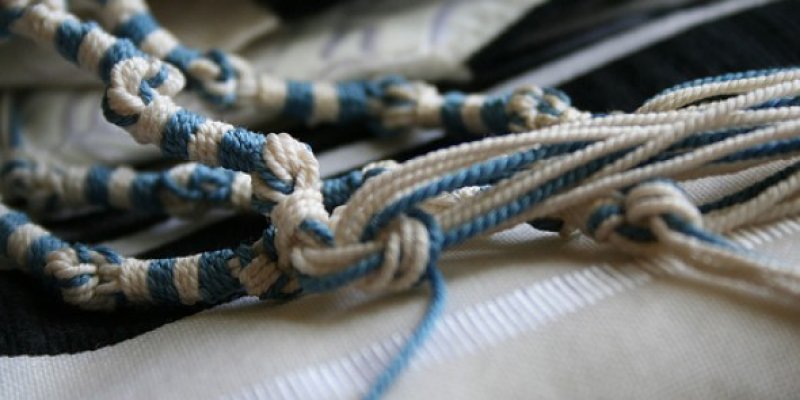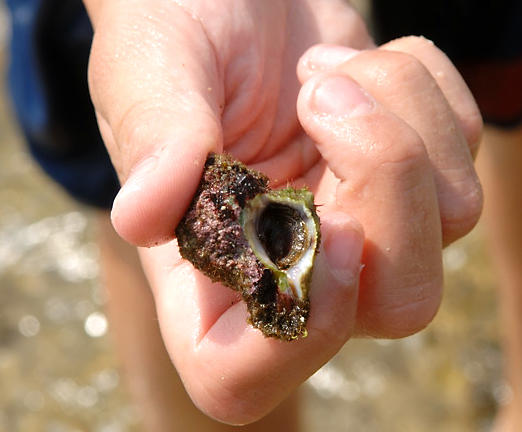
The Torah commands that we put a "cord of blue" into our tzitzit. This was observed scrupulously until the third century, when the Roman/Byzantine authorities decreed that only their royalty could wear blue. They closed down the manufacturing sites of the blue die, primarily in Northern Israel and Lebanon. The ruling of the Talmud is that when techelet (the blue dye) is not available, the tzitzit can still be worn with the white strings only.
We must remember that there were no artificial dyes until the 18th century. The Talmud rules out Indigo (kala ilan), without indicating why. A rabbinic work, the Tosefta, states that any dye not derived from the "Chilazon" is invalid. Most rabbis accepted this. Some, however, argue that this is not mentioned in the Talmud, except as being that which is usually done. One present day rabbi, Rabbi Israel Ariel (head of the Temple Institute) accepts that any blue, even, durable dye would be valid. Indeed, Maimonides rules that way in regard to the sanctuary, where techelet is also required.

There have been several rabbis and groups who have sought to reintroduce the original techelet. The first was Rabbi Liner, the rabbi of Radzin in the late 1800s. He searched for a sea creature that fit the very enigmatic description in sources. In a public aquarium in Italy, he came across the Cuttlefish. It produces a dye, known as sepia. Sepia, however, is brown, not blue. He asked a chemist if there was any way it could be turned blue. The chemist, employing the usual test for nitrogen, made blue sepia. However, had he used any other part of the fish, or even a hamburger, he would have gotten the same results. I once spoke with Rabbi Menachem Burstein, probably the greatest present day authority on techelet, who told me that, as unlikely it may be for the cuttlefish to be the "chilazon" it seems from the writings of Maimonides to have been his impression as well. Today, Radziner Chassidim, and most Breslover Chassidim, use this techelet.

Modern archaeology has discovered the ancient dye producing factories. Man thousands of snail shells have been discovered; but of several species. Which species, or combinations of species, was the Biblical Chilazon? The "Ptil Techelet" group has settled on one particular species, whose die is chemically identical to indigo, which would explain the Talmud's warning against vegetable indigo. Many rabbis have endorsed this view. (I, however, have some reservations as to how it is made). Another researcher, Dr. Shaul Kaplan, the only Orthodox oceanographer in the world (to my knowledge) espouses a different species, whose die in naturally blue, rather than through oxidation, as the Ptil Techelet group's is. For some reason, his view has garnered little support, although it is quite convincing.
Most rabbis do not support any of these views for one of several reasons. First, we are not really sure of the identification of the Chilazon, or exactly what color is techelet. Most assume it is a sky blue. According to RASHI, it is a greenish blue. According to RAMBAM, it is a dark blue, close to black.Another reason many hesitate is because the ARI said that techelet will not return until Mashiach. However, the great kabbalist and scholar, Rabbi Naftali Katz, wrote that the rediscovery of techelet would be a sign that redemption is near. Others feel that if the great rabbis of the last sixteen hundred years didn't have it, who are we? It is known that the Rabbi of Radzin presented the Chafetz Chaim with a set of techelet. The Chafetz Chaim put them on a Tallit, which he only wore on Rosh Chodesh (New Moon).

There are also differences of opinions as to how many of the strings need to be blue. The tzitzit consist of four strings, folded over to make eight. The view of RAMBAM is that only one of the eight should be techelet. RAAVAD opines that one full sting should be techelet, resulting in two of the eight. ROSH requires two of the four, meaning four of the eight. Each view has its modern day advocates.
For the record, I use Radziner techelet when I can get it. When I can't, I use artificial dye, in accordance with the view of Rabbi Ariel. May Hashem guide us in a straight path, and renew our days as of old.